Digital dementia is a term I first came across recently. With a fourteen and twelve year old it’s been on my mind, can kids really get dementia?!
Over the past couple of weeks I’ve been diving into the research #vestedinterest. This is what I’ve found… As you can imagine, it’s not good.
I have to admit that our kids have definitely experienced tech trance (or dare I say, tech rage). Technology and devices are entrenched in our lives, we can’t avoid them, yet there’s much we can do to manage them and make them safe. It’s an important conversation – whatever age your kids are (and for us as adults).
The statistics.
Research is showing that in the USA 95% of children aren’t getting enough sleep, exercise or safe screen use, much of it’s related to device use. The average amount of time children are using a device is 7.5 hrs / day. For some teens it’s 8 – 12 hours /day! You might’ve noticed it yourself. Driving past the bus stops as kids are waiting for the school bus or as soon as they leave school, devices out, necks craned, sucked into another world.
Mental illness, such as anxiety and depression is accelerating in our kids! The following can help paint a picture as to what’s going on.
What is digital dementia?
Briefly, digital dementia is the thinning of the brain cortex (outer layer of the brain) responsible for thinking, speech, feeling, decision making and processing information received from our senses.
Signs of digital dementia and excessive screen time;
Our childrens’ brains are still developing and therefore so much more vulnerable to what we expose them too, especially the affects of technology and digital devices.
The other affects are equally alarming & are contributing to digital dementia;
We can’t prevent our kids using them & there are positives, but we do need to teach them a healthy & safe relationship to technology, and importantly being good role models ourselves.
Childrens’ developing brains and bodies are especially vulnerable to what they are exposed to, especially technology.
Recommended usage
This varies depending on the research. However, it is clear that children under the age of 2 years old should have very little exposure, if any, to a device. For other age groups it will depend on how they’re using it and what they’re using it for. Blocks of 2 hour usage is a general recommendation with an average use of 2 – 3 hours a day.
What we can do
The best antidote: Exercise. Movement stimulates the hippocampus (responsible for memory & affected by device use), keep them moving.
Simply taking the kids outside with unstructured play, shoes off is a fantastic place to start.

Summary
This generation of children are ‘guinea pigs’ i.e. an experiment in understanding just what the developmental ramifications of screen time will be for them? It’s untested. However we DO know, that as a species we are already far more inactive and moving less efficiently than our ancestors, and screens are only exacerbating this.
For kids to thrive they need interpersonal and parental presence and genuine connection with more time outside, shoes off, skin exposed to the weather, enjoying creative, free play. It’s their human nature.
Our children are older so it’s been easy sharing this research with them. And I remind them it’s hard for me to manage too! They’re not alone. Try creating a sky time v screen time plan together.
Forewarned is to be forearmed. We have all had times when the kids have spent way too much time on their devices. There is no guilt, just awareness. When we know better we can do better.
I hope this helps you and your family limit the potentially devastating affect technology is having on our kids developing brains… the unique intelligence that governs the rhythmic, vital function of their amazing bodies.
Now I’d love to hear how you manage devices in your home? Please share in the comments below.
‘The most confused we ever get is when we try to convince our heads of something our hearts know is a lie’ ~ Karen Moning
With Mother’s Day here there are 3 life-changing lessons I’ve learned as a Mum.
I wish I’d known them earlier as they’ve made motherhood less stressful, more enriching and empowering.
If you’re a mother, father, grandparent or carer, I hope it helps you too, especially no. 3 – recognising the feminine in our evolutionary blueprint;
The fundamentals
There are fundamental things I’ve learnt (and that are still work in progress) e.g. asking for help, being kinder on myself, being more honest about how I’ve felt, how tiring and relentless parenting is, patience and regarding our children as my greatest teachers and all the rest…
3 deeper findings
But there are deeper findings that when I discovered them, felt like a big, reassuring hug that made sense and stirred an inner strength that somehow has made motherhood enlightening and strengthening.
They are;
If the term matresence is new to you, it’s defined as ‘The transformation of becoming a Mother’.
Just like adolescence, it takes time for the transition to take place and involves intense hormonal and neurological changes following the birth of a child.
It can take as little as 4 – 6 weeks, often longer e.g. as long as 6 months (if it is honoured/recognised, longer if it is not).
It’s a window of time that’s completely dedicated to bonding with our babies, feeding, nurturing, replenishing our bodies and honouring our transformation, energising and replenishing us for child rearing and creating a fulfilling transition into motherhood while discovering a new sense of self as we learn to listen to and trust our powerful maternal intuition.
Traditionally every culture recognised this transformation and honoured a form of matresence. Keep reading to learn what happens when Matresence goes wrong, it’s likely to sound familiar…
Then to learn more, read my post, ‘…When Matresence goes wrong’ and my video interview with the wise and informed, Dr Oscar Serrallach, Author of ‘The Post Natal Depletion Cure’.
Dr Serrallach coined the term ‘postnatal depletion’. He suspects the syndrome affects up to 50% of mothers (I suspect it’s more) and can affect them anywhere from the birth of their child up until the child is 10 years of age.
Dr Serrallach says, ‘post natal depletion occurs when matresence goes wrong’.
Sound familiar?
When I first heard this term many years ago, I knew it was exactly what I had experience. Post natal depletion may present as;
I wrote about my own version of postnatal depletion and what it looked like here.
There’s a lot I would’ve done differently had I known how depleted I was physically and emotionally after having children. It’s no wonder many of these conditions ‘flare up’ one – two years after having children.
There’s a strong ancestral lineage of feminine wisdom throughout our evolution.
I’ve gained an inner strength recognising this intimate connection with the natural world and learning about the divine feminine (energy). I thought it was a bit woo woo – it’s not. It may take a mindset shift though… Understanding this energy is super important for our emotional and physical wellbeing (think nervous system) and therefore, for our families, our communities and our world.
Stay with me…

Suzanne Kingsbury, Author and Business owner, says the divine feminine is an energy that has been with both men and women since ancient times.
There is both a masculine and feminine energy in everyone and we need both energies to achieve our potential. To our benefit but also to our detriment, in the past 100+ years, our feminine energy (in both men and women) has mostly been suffocated / ignored.
For those unfamiliar, the divine feminine is not in the sense of male v female but an aspect of each individual that’s associated with creation, intuition, patience, nurturing, right brain, community, sensuality, collaboration and empathy – regardless of gender. As opposed to the masculine energy that’s associated with things like courage, independence, striving, assertiveness, left brain, logic, control, competition, organisation and more.
As imagined for the last century or so, women have fostered their masculine energy to earn their place and compete with men. Not only for the right to be educated and remunerated well but for the necessity to support our families, run the home and go to work when men (and women) went off to world wars.
It’s a patriarchal existence we’ve carried on with, and for many good reasons, however at the time, our parents, grandparents, great grandparents etc. had to ignore and suffocate their feminine energy. Behaviours we’ve modelled and generally, haven’t thought to question. But I believe it’s making us sick.
As Mothers, when we have children, this feminine, nurturing, intuitive, energy within us is heightened, it’s instinctual, and it kicks in to help guide us in raising and supporting our families.
I remember having babies and going back to work part-time in my corporate role, (a masculine dominant energy), but feeling a very strong inner turmoil of conflict. I wanted to be at home nurturing and nourishing my babies but torn by the feelings of needing to continue working long hours and striving to maintain my management position while leaving the responsibility of raising my children to others. There are many women who have the inner balance and manage this incredibly well and don’t feel this inner turmoil. However there are many of us who like me, who have this inner conflict, and without us realising it can make us feel depleted, stressed and at odds with being a mother. Particularly as we have to let go of the masculine qualities that have defined us for so long such as, independence, control and organisation.
Yet if I’d had this knowledge of the different energies and their aspects, I think I would’ve understood WHAT I was feeling so much better and been able to reconcile how I was feeling and actually I wasn’t incapable, I wasn’t being lazy or going crazy!
I would have understood Matresence, it’s important role and that it’s not forever. Rather it’s an imperative for raising strong, healthy, happy children. That my low immunity and hormonal imbalance was actually post natal depletion and that if I had nourished myself better and understood the transformation I was undergoing I would’ve perhaps been less stressed and far kinder on myself i.e. happier and healthier.
But I underplay what can happen when this energy continues to be suffocated or ignored.
It is energy and energy needs to move otherwise it ‘stagnates’. Stagnant energy combined with poor food and lifestyle choices can trigger distress and dis-ease in the body. I believe it’s no coincidence that it’s so common for women to ‘suddenly’ experience autoimmune conditions, hormonal imbalances, lower energy, digestive issues etc. after childbirth.
Other examples of feminine wisdom in our evolutionary blueprint
A couple of other quick examples of the feminine wisdom within our evolution I find empowering and fascinating;
The knowledge is there within us, it just takes time, space and wisdom to release it, let it bubble to the surface and guide us to reach our full potential as women, mothers and men.
What next?
So if, (when) you feel down or overwhelmed or overjoyed in your most important role in the world, you’re struggling with an illness you can’t get to the bottom of (no matter your age), consider the above and our evolutionary blueprint. Do you need to reconnect to the feminine (or not)? To learn to hear your intuition and gain an even greater inner strength that will guide you to your full potential? While at the same time lightening the ‘motherload’, feeling less stressed and rediscovering your true self …
Simple things we can do to reconnect with the divine feminine (for men and women);
In conclusion
There’s no right or wrong, but if it these sentiments feel right, embrace more of those innate feminine qualities and take a moment or two to notice how it makes you feel. That is where the healing is.
I’ve focused this discussion on Motherhood and my heart goes out to all those women who have suffered loss or for whatever reason won’t be Mothers. Yet this discussion is still relevant. There is this same feminine wisdom in all of us (men and women) and it needs to be honoured, with or without children.
This is my personal interpretation only. There are many resources available to further your own learning, some of my favourites is the work of Dr Kelly Brogan & the book by Dr Rudy Eckhart, ‘The truth of love and fear’.
To transform your wellbeing and your families, from the inside out, simply and naturally contact me https://www.katebarnes.com.au/contact/ for an initial discussion or let’s start with my popular wellness kickstart program – my 7 day enriched mama program.
Very simply, they’re not less tolerant. It may seem they are, however, it’s more likely;
And traditionally our sweet palate would’ve been satisfied with the natural sweetness found in leaves and tubers, a long way from the sweetness we’ve got used to today!
Simply, sugar is not what it used to be when we were growing up. I know it can be difficult for grandparents and others to understand this when they just want to give their grand children a little treat!
So to avoid a sugar overdose try this;
Otherwise enjoy the special time to spend with friends and family and when you’re back in a routine, you can get back on track and importantly, focus on strengthening their immunity! My mini ebook, ‘Why kids get sick’ is a perfect place to start.
Download it on my site for free.
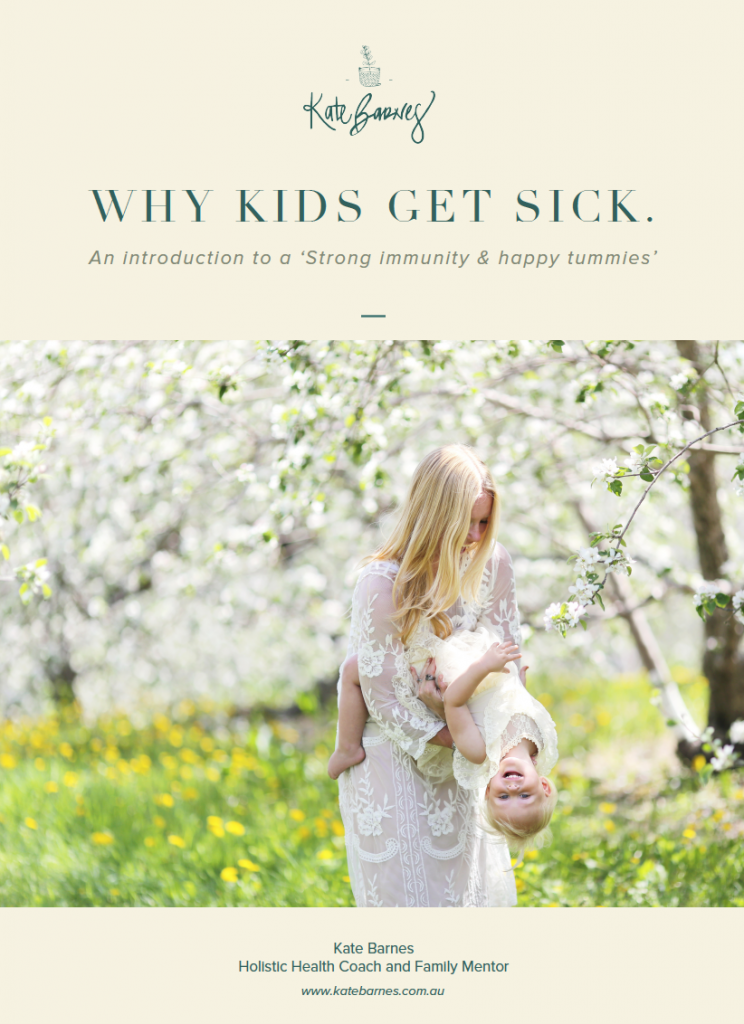
To transform your wellbeing and your families, from the inside out, simply and naturally contact me here https://www.katebarnes.com.au/contact/ for an initial discussion on what’s right for you or let’s start with a healthy aging review and assessment.
Quick and Easy Chocolate Gifts & Treats;
home made (everything) rocky road
chocolate crackles – An oldie but a goodie!
Granola
A Crunchy Granola (great for travelling and if you need a healthy breakfast or snack on the go)!
Beef
Slow cooked cinnamon beef cheeks with cauliflower cream
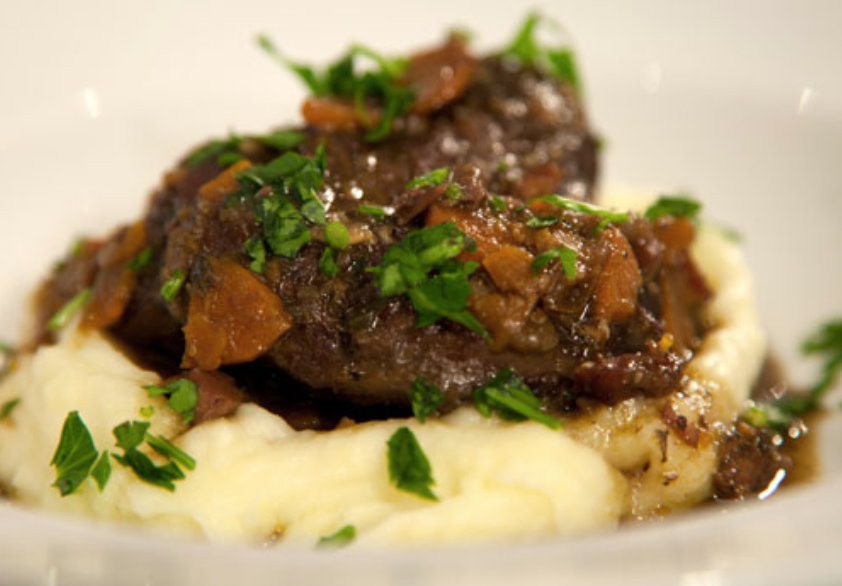
Fish
Lemongrass, Garlic & Coconut Fish Curry

Eggs
A feastive one pan breakfast (perfect for brunch or a lazy morning).
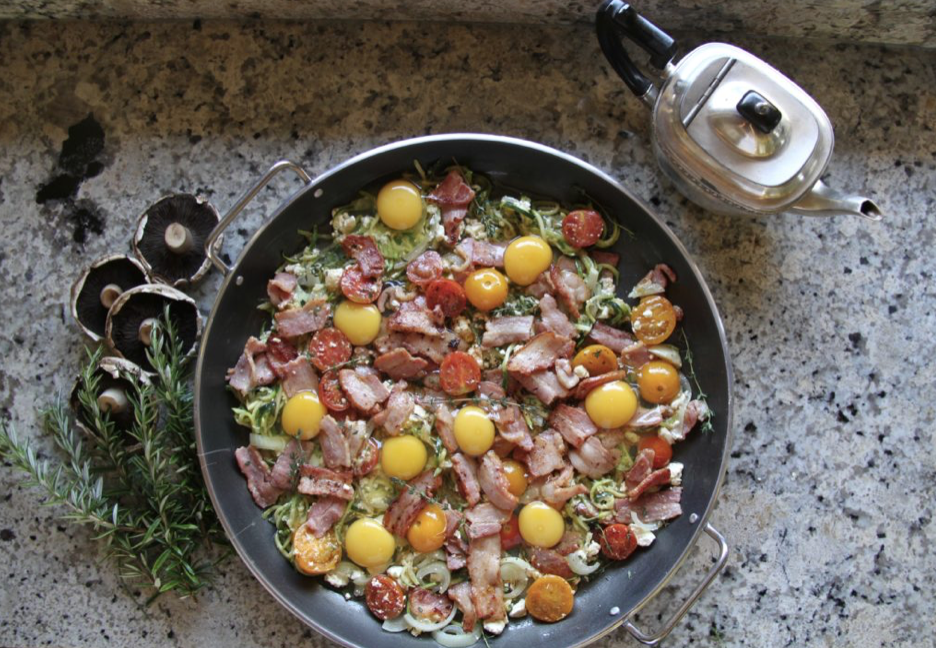
I recently went to a public talk, ‘Bring back the fat’ hosted by Christine Cronau, Nutritionist and Author, who transformed her weight and health on a high fat, low carb diet 18 years ago.
Her presentation shared case studies, benefits and more on adopting a ketogenic diet (high fat, adequate protein, low carb), which I’ll share more on at another time.
It was the speaker after the break, Dr Aseem Malhotrah, a cardiologist, author, researcher and professor of evidence-based medicine that I was curious to hear from.
Dr Aseem is well credentialised. A Cardiologist, Harley Street Roc Private, The King’s Fund – Trustee, Academy of Medical Royal Colleges – Choosing Wisely Steering Group, Advisor National Obesity Forum. He’s written numerous health and academic articles for medical journals and mainstream media on topics related to obesity, heart disease and health policy. He’s also won a number of awards for his work and was named in the Sunday Times Debrett’s list in 2016 as one of the most influential people in science and medicine in the UK.
His opening slide read;
‘The demonizing of saturated fat and cholesterol and the mass prescription of statins; the biggest mistake in the history of medicine?”
It got my attention.
Here’s a brief overview of what he shared;
On the state of the medical system.
On predicting heart disease or Coronary Artery Disease (CAD).
Other indicators for heart disease testing include a;
As you’d assume, Dr Aseem is not without critics.
After the publication of an article in the British Medical Journal, ‘Saturated fat is not the major issue’ his findings were questioned by an Oxford University Professor – Sir Rory Collins. It prompted an independent review, which found Dr Aseems findings valid. However, the review also found that the Professors University research was financially conflicted due to payments made to his department and to the University.

Concluding comments.
Although why wait to see a Doctor when healthier lifestyle choices can be made today?
What to do?
If his research has peaked your interest I encourage you to do your own research, ask questions and become informed about this important topic and where the money (funding) trails lead.
To transform your wellbeing and your families, from the inside out, simply and naturally contact me here https://www.katebarnes.com.au/contact/ for an initial discussion on what’s right for you or let’s start with a healthy aging review and assessment.
References & resources;
https://bjsm.bmj.com/content/bjsports/51/15/1111.full.pdf
https://www.ncbi.nlm.nih.gov/pmc/articles/PMC380256/
http://doctoraseem.com/the-great-statins-divide/
Dr Ross Walker https://medium.com/@drrosswalker/statin-use-in-older-people-16a000be0634
Journal, Summer 2017, Nurturing Therapies for Heart Disease
‘saturated fat is not the major issue’, British Medical Journal
This week the ABC published an article, ‘What’s in our kids lunch boxes’?
It’s been preying on my mind.
Schools from differing socio-economic backgrounds suburbs were visited in the same city in Victoria to see what was inside childrens’ lunch boxes.
What they found isn’t too surprising but was deeply concerning (see images below).
Briefly, here’s what they found;
Yes, it may be just a snapshot of one city and a couple of schools at a point in time, but I think it’s probably a snapshot of society generally.
Lunch is only one meal in the day. Does it really matter? YES. It makes up a third of our daily food intake.
And we know for many, breakfast is not going to be too different in terms of the few (if any) nutrients growing children are getting i.e. a bowl of highly processed cereal with milk or toast and vegemite! Kids get home from school tired and hungry (needing real food i.e. nutrients), and make poorer choices around homework, relationships and more. Then let’s assume dinner is meat and some veg – awesome. But… It’s NOT enough.

Snapshot of lunch boxes from Broadmeadows.
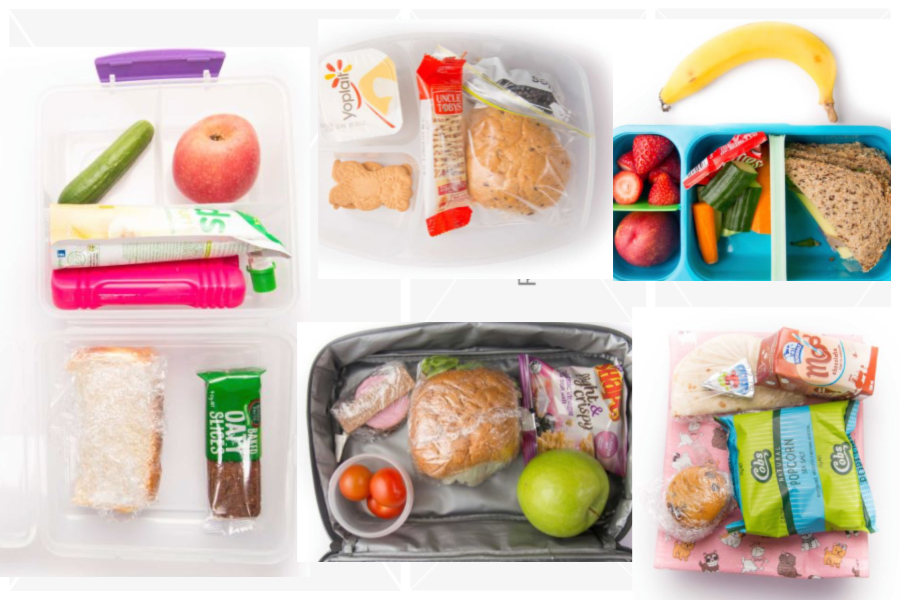
snapshot of lunch boxes from Brighton (read the article for lunch box details)
In summary.
Children are growing, developing and DEMANDING every type of nutrient for their brains, hormones, immunity and so much more and they’re not getting enough of what they need – no matter where they live.
The ABC’s “universal snapshot” shows in images that our children are under nourished i.e. they are potentially ‘malnourished’. Sandwiches and packet foods are not enough.
How can they be expected to perform at school and in life when the fuel tank is empty?
I fear for this generation and the generation to follow them. It makes me sad.
I know you’re aware of this and doing great things in your home to nourish yourself and your families but… in todays world to get kids eating a good lunch is hard. Even for the healthiest of us, including me – irrespective of wealth.
After making lunch boxes for 10 years (where did that time go) – I know!
And now as they’ve got older and their peers are so much more influential in their choices, it’s harder again.
It’s one thing to know what makes a good nutritious lunchbox, another getting kids to eat it especially when their buddies are opening up packets of ‘food’ and munching on vegemite sandwiches, and ‘no-one wants to swap their lunch with you!’ OR they just won’t eat the healthy ‘stuff’ and are fussy eaters. It’s easy to relent. But that’s like saying to them it’s ‘okay’ and it’s not. Every now and again is okay – not most of the time.
Which is WHY as parents and carers, it’s important to stay strong in encouraging our children to eat well in their early years.
I think of it as my gift to them and that one-day, they’re going to be grateful for all those ‘weird’ foods in their lunch boxes (fingers crossed).
In saying that, an unhealthy lunch box is not about lazy, un-financial or ill-informed parenting.
It’s a symptom…
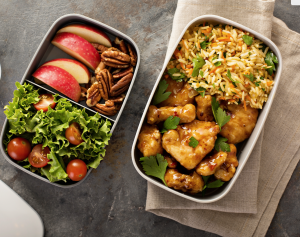
It’s a symptom of deeper issues at play;
Making time for preparing good food now is better than making time for sick kids, doctors, specialists, medication and the slippery slope into auto immunity and chronic illness later.
Perhaps by bringing awareness to these deeper issues / thoughts it will make it easier next time you’re preparing lunch boxes in the heat of the busy morning.
And if your children refuse to eat your healthy lunch box, don’t give up, there is a good reason for it. Rather find someone you know who understands the deeper issues or contact me for a complementary initial discussion to hear more about how we will get them enjoying a wide variety of foods and so much more.
It’s a complex issue. Strong social leaders like chef Pete Evans and also Sarah Wilson (I Quit Sugar), with massive international audiences, have tried to change what ‘healthy’ looks like in our schools at a government level, with only limited success.
But is it totally up to the government? Of course not – we need to be aware of the deeper issues and take responsibility ourselves.
It starts in our homes, at our tables and in our hearts.
Think about real food – clean, natural, real …
Let’s bring back healthy lunches.
And for simple ideas on how to save time and pack a healthy lunch box, with loads of nourishing, delicious recipes, a reminder to check out my ‘Lunch box rescue’ ebook.
As a Mother, Scientist, Business Owner and Wife I understand how full life is. It is my passion to work with women to simplify the overwhelm we often carry in managing it all while still nourishing our families and ourselves. Simply. Naturally. Contact me here for a complementary call. Why wait?
The thought of ‘starving myself’ is unappealing. I’m sure you feel the same. However with all the discussion about intermittent fasting (IF) I’ve been excitedly drawn to the idea and in the past week have been experimenting (while doing my gentle cleanse). ‘What’s taken me SO long?’ I hear you say.
Hmmm thoughts like, how do I do it? I’d starve myself! I’ll get it wrong, It’s not for me etc etc!
Yet across the world in different cultures, some form of fasting has been practiced for spiritual and religious reasons for centuries. Touted as a way to refocus the mind and body, sometimes lasting 24 hours or more. Then go back a few hundred thousand years and fasting was a part of our day to day existence. It’s in our DNA.
An ancient practice or way of life that’s become the ‘new thing’ and in our world of abundance and over consumption of food perhaps for good reason.
If you have or you’ve been interested like me, here’s what I’ve discovered, but first… what exactly is it and what is autophagy?!
Intermittent Fasting.
Traditionally a fast is not eating food for consecutive days or even weeks. Intermittent fasting however, involves not eating food for just 12 to 16 hours a day and reducing the window of time you eat to an 8 to 12 hour period. That’s it.
The ideal timeframe for health benefits seems to be 16 hours.
The benefits to be gained are when fasting happens consistently over a longer period of time i.e. no quick fix (sorry)!
Benefits;
• promotes healthy weight
• improves blood sugar
• helps a healthy heart
• reduces inflammation
• reduces appetite
• protects cognitive (brain) health
• helps fight stress-induced cravings
“Intermittent fasting is hypothesised to influence metabolic regulation via effects on (a) circadian biology, (b) the gut microbiome, and (c) modifiable lifestyle behaviours, such as sleep. https://www.ncbi.nlm.nih.gov/pubmed/28715993
Other benefits;
It simplifies a healthy lifestyle by reducing the food choices we need to make every day. As a Mum this is especially attractive!
Abstaining from food for longer than normal means we give the body a break from constant digestion, more time for rest and repair.
It’s easy. Intermittent fasting is straightforward. It doesn’t require any extra thought to menu planning or long shopping lists.
It kickstarts ketosis. A state that happens when we no longer have glucose to use as a fuel and we resort to burning fat for fuel so ‘retraining’ our systems to burn fat stores for fuel – our natural state. (as Naomi Whittle, Author & CEO says – “it is nature’s reset button”)
How it works.
One of the most exciting ways is a process called autophagy.
If you haven’t come across this term, in Greek auto means ‘self’ and phagy means ‘to eat’. Autophagy refers to a self-eating process within our cells that encourages the proliferation of new, healthy cells.
‘Fasting is a crucial component that ultimately controls inflammation in the body and activates autophagy’ ~ Yoshinori Ohsumi, 2016 Nobel Prize in Physiology or Medicine.
Imagine, as our bodies aren’t working on digesting so much food, they get the chance to tend to cellular functions. Functions that include removing waste and toxins from the body. It gives our digestive system and body a chance to rest and repair. In doing this it takes ‘stress’ off the bodies important functions.
Without food, insulin levels in the blood decrease and can keep the body sensitive to insulin, which gives better blood sugar control. With blood sugars being managed better, and the stress on the body reduced, the body can then start to burn fat.
Hence it’s easy to see how IF helps with;
• Metabolism
• Weight management and consequently
• Better sleep (and all that goes along with these improvements)!
Note: enjoying nutrient rich drinks in the fasting timeframe, especially mineral rich drinks and some healthy fats, such as bone broth may assist the fasting benefits.
It may not be for everyone.
It seems that if our hormones need some love and attention or there are other imbalances, fasting may backfire e.g. I’ve worked with clients who fast and after losing weight initially their energy and weight can plateau. As soon as they introduce smaller more regular meals, their energy increases and sleep improves.
Support your liver and kidneys well before fasting. This is important. If our detox pathways are clogged, not detoxing efficiently we don’t want toxins recirculating throughout the body causing unwanted trouble.
And if you have trouble metabolising fats then it may be important to start very gently e.g. a 12-hour window of fasting rather than 16 hours and see how you feel.
We are all bio-individual and while something may work for one it may not work for another at a particular time and place. Listen to your body and do what’s right for you and always consult with your health practitioner.
One more thing, food and the preparation of food in our homes has magical qualities in how it brings us together and nourishes us. It’s important we always continue enjoying food in this way and the love, thought and preparation that goes into sharing it with those around us.
In summary
It takes time. While the lure of immediate weight loss is attractive, it’s not healthy. Far better to do it gradually and IF seems to have the good results when done over a longer period of time and while still enjoying a nutrient rich, real food diet, without ‘empty’ calories.
Personally, at the end of the week I’ve enjoyed a renewed energy, clarity of thought and calmness. I love my gentle cleanse and do it a couple of times a year. This time I did it with my hubby which was a really great experience and more enjoyable. Just until this Sunday the 13th of February, 2019 you can download the cleanse manual for free here and join me on a LIVE call as I walk you through it for even better outcomes.
And now I’m looking forward to experimenting more with IF and seeing how it works best for me. If you’ve fasted before or done my cleanse let me know how it went? I’d love to hear.
References
https://www.naomiwhittel.com, ‘Glow 15’
https://www.mercola.com
https://www.youtube.com/watch?v=6bAkvnvX0W8 Yoshinori Ohsumi
https://www.ncbi.nlm.nih.gov/pmc/articles/PMC6128599/
https://www.ncbi.nlm.nih.gov/pubmed/28715993
‘Is giving up the carbs’ something you’ve committed to? Are you feeling an extra need for carbs with the change of seasons & maybe feeling guilty?
Cutting back or giving up carbs is something we know we need to do BUT… in reality is hard! (Especially those sneaky mid afternoon chocolate fixes)?!
Carbohydrate (carb) cravings might feel like;
So how do we kick these cravings and live a little more?…
Three things;
Great. So how do we do that?!
Firstly let’s look at blood sugars.
We understand how simple carbs can send our blood sugars on a crazy rollercoaster ride – you know the ones i.e. pasta, rice, pizza, bread, biscuits, generally highly refined and processed foods and grains that the body can use quickly for fuel.
This conversation with my son and analogy about twigs v logs will help.
Twigs v logs.
I’m not sure how the conversation started. We were sitting at the family dinner table when our youngest stated he wanted to eat more pasta and pizza because it was good for him?!
He was ‘fishing’ for a bite that’s for sure. I reckon he got a bit more than he could chew!!
Stay with me because this might help your family too.
About to jump up and down and correct his misguidance, I caught myself and kept quiet for a moment (not so easy to do)!
With my hubby’s support, I explained …
It’s like keeping a good fire burning.
To make a good fire what do we use? ‘Logs and twigs’.
What gets it started, by making it burn fast and hot? Twigs.
So what makes the fire burn steadier and for longer? ‘logs’.
What happens if we used just twigs and no logs? ‘We need to keep adding twigs constantly’!
So there are 3 types of energy our bodies use for fuel; fats, carbs and protein (macro nutrients).
Fats and protein are like the logs – add them to the fire, or our metabolism and they give us good, sustaining, steady energy for a longer time.
Simple carbohydrate is like the twigs. When added to the fire (or our metabolic system) alone, they’re burnt up super quickly. We need to add more and more twigs to the fire to keep it alight!
It’s an over-simplified analogy of energy production but he totally got this. And maybe it’ll help you and your family too.
So getting back to our blood sugars. It’s like the twigs.
The twigs burn quickly, and quickly need to be replenished to stop the fire going out. It’s the same for us. Eating a lot of simple carbohydrates means we need to keep replenishing the fire. If we don’t, our blood sugars swing and cravings kick in (we need energy). It’s almost always leading to excess energy and fat storage i.e. weight gain.
Eat more sustaining fuel i.e. protein and fats and our blood sugars are more stable, (this doesn’t necessarily apply to type 1 diabetics).
An interesting fact about these sources of energy is that fats and protein are essential to our diet. We need to get these energy sources from our food. Carbohydrate on the other hand is non-essential i.e. our body metabolises (makes) glucose (a product of carbohydrate) from fats and protein as and when required. Carbohydrate therefore is a non-essential dietary fuel – i.e. we actually don’t need much in our diet.
Secondly, what’s driving the craving?
Let’s assume you’ve stabilised your blood sugars but you’re still guiltily reaching for the bowl of pasta or slice of cake! Stop. Before eating the cake, take a moment to think about WHY you’re reaching for it? Is it boredom, tiredness, stress, lack of movement, self care, time outside, the need for comfort etc? Or is there a microbiome imbalance driving the need for simple carbohydrates & create further imbalance? This article, ‘parasites, the silent epidemic‘ might help answer this for you.
When we crave foods, it’s more likely there is a deeper spiritual or emotional need not being met. To help identify this though we need awareness and we can only have awareness if we stop, slow down and take a moment to notice or feel what it is our bodies are really asking for?
Thirdly, is it seasonal?
Through the winter months and the transitioning of the seasons, we can naturally crave more comforting, heartier or starchier foods. It may be that your body needs a few more of these whole foods and complex carbs such as basmati rice, sweet potato, quinoa and other unprocessed, gluten free whole foods. At times women (and our hormones) can especially benefit from adding more of these foods into the day. If this resonates for you, perhaps experiment and see how you feel.
So in summary HOW do we manage cravings?
13 ways to kick the cravings.
The body is complex and there is a lot to consider other than food alone in the production of energy and to curb cravings, (something I go into far more detail in my 21 day foundational program, ‘Get-up & GLOW with Kate‘)
Commonly these 12 ideas make a great difference;
Cravings can infact be an invitation to continue our personal evolution to becoming the best version of ourselves.
Try any one of the above for 2 – 4 days and the cravings will pass. As you nourish your mind and body more deeply, blood sugars will begin to stabilise and your mood improve as your body returns to balance or homeostasis.
Making change and new choices is more enjoyable and successful with community, knowledge and accountability. If you’re looking for a super quick reset grab my free copy of A Gentle Cleanse and register for my upcoming call! Grab it and register here.
Or for more lasting lifestyle unleveling join me in my next round of Get-up and Glow! Where we go into this topic in more detail and create new healthFUL habits for life. We start on the 30th of August for 21 days to inner and outer radiance. It’s our foundational detox program. You can join me through this link!
And, ‘never give up because great things take time’.